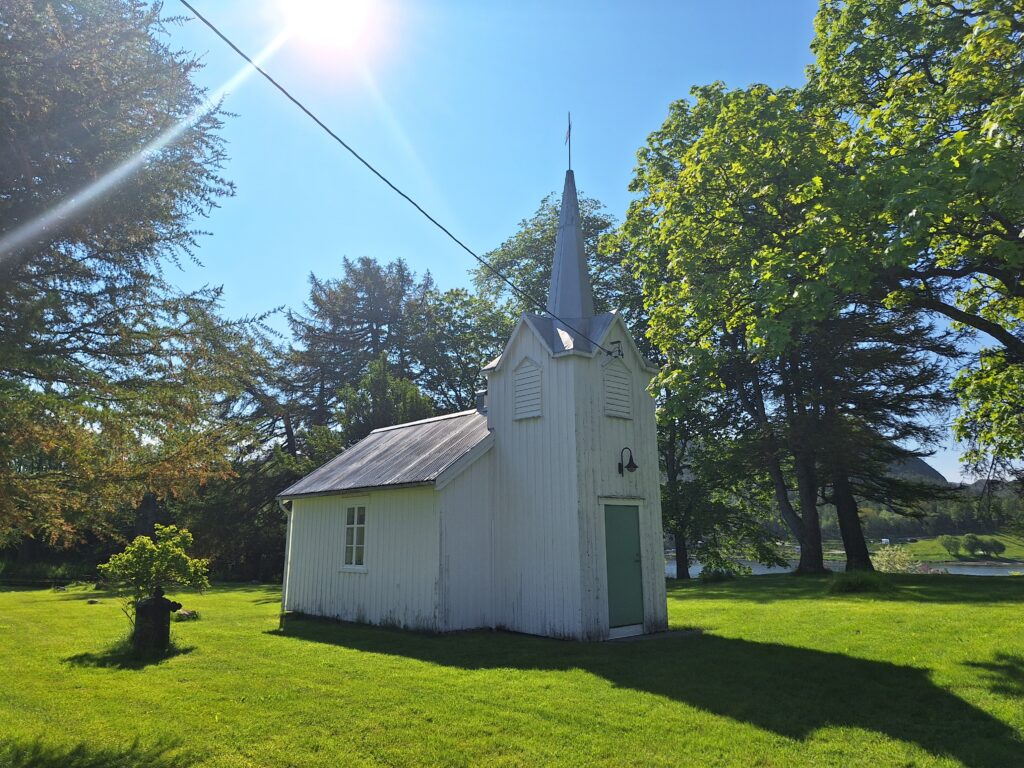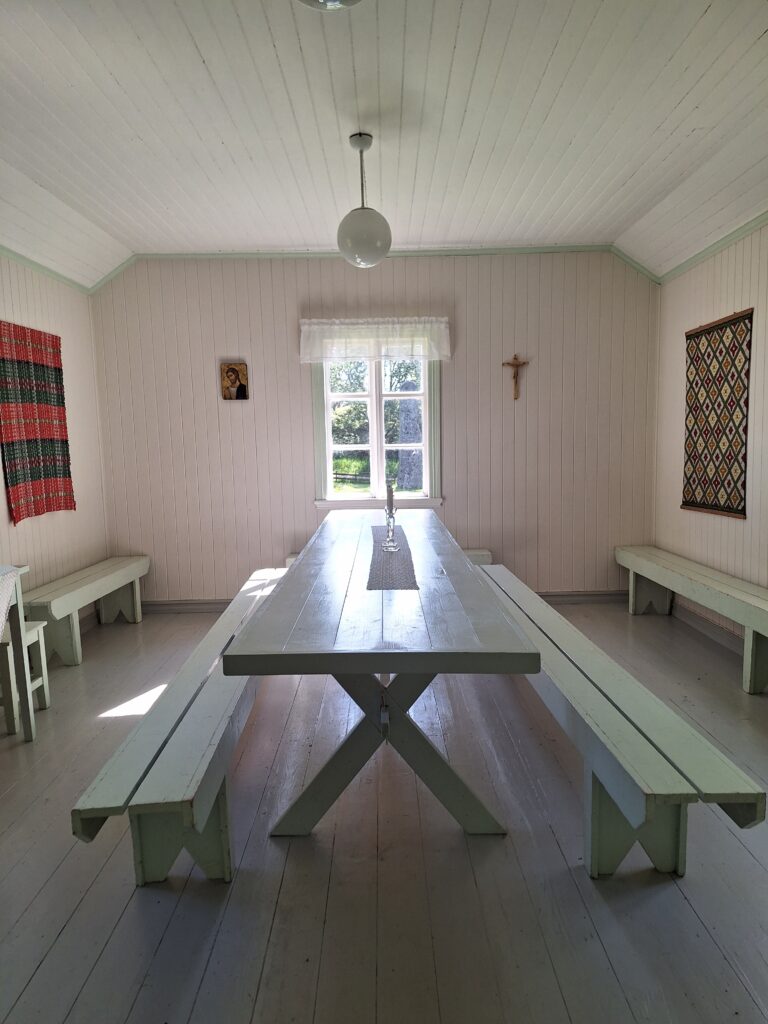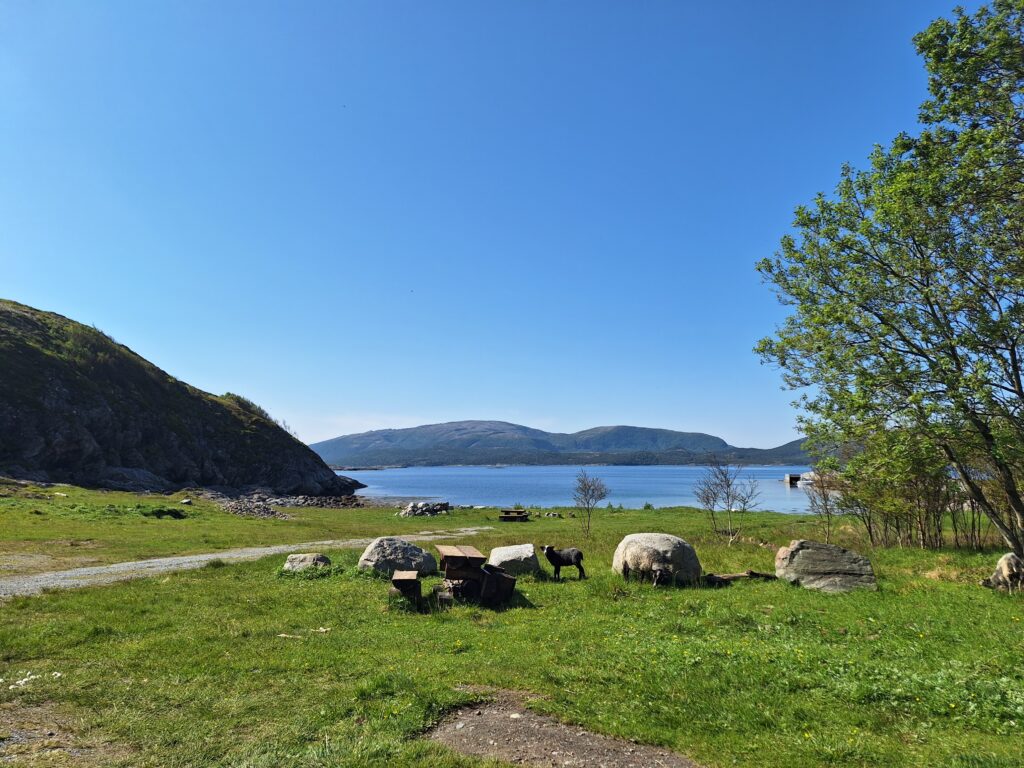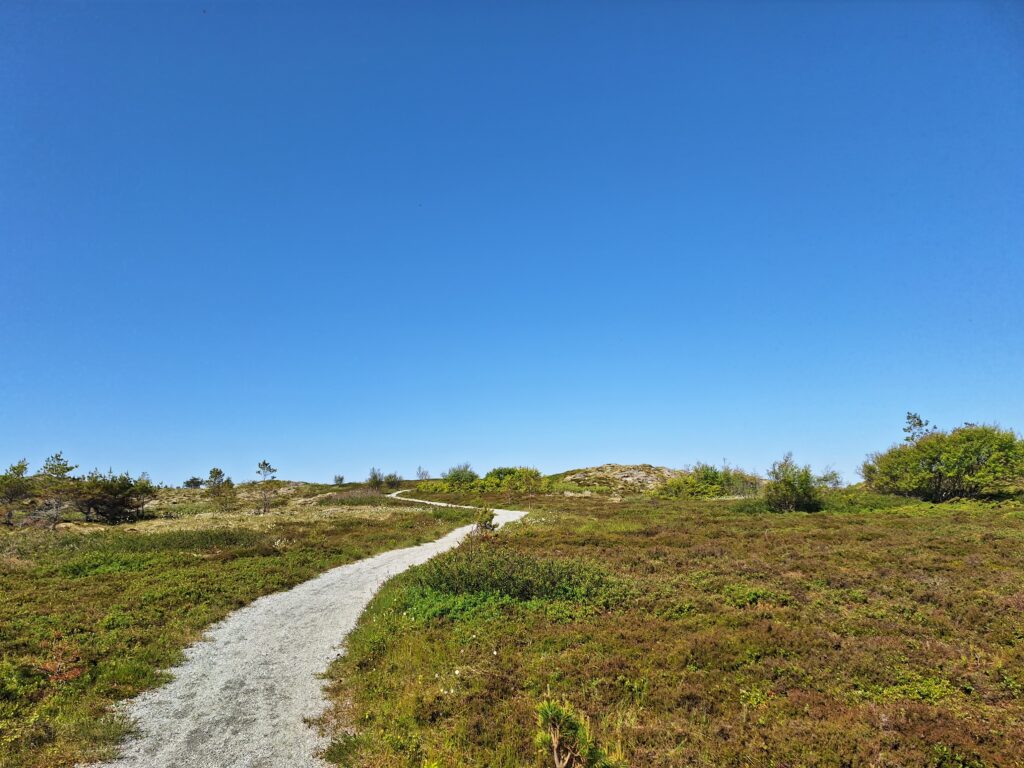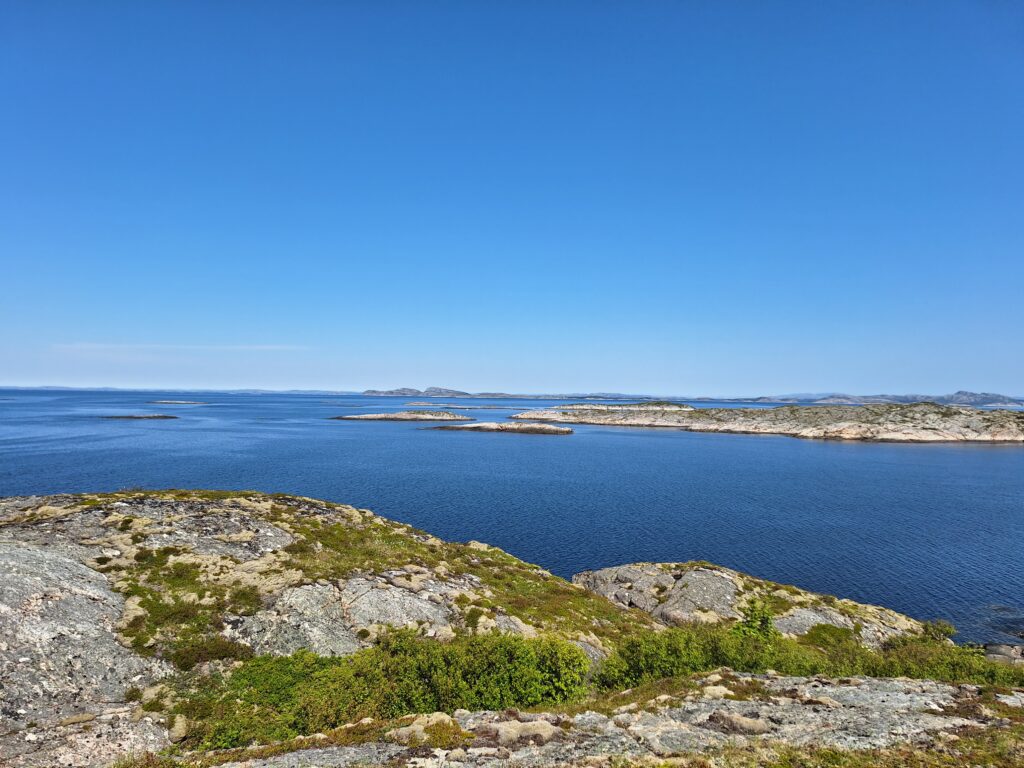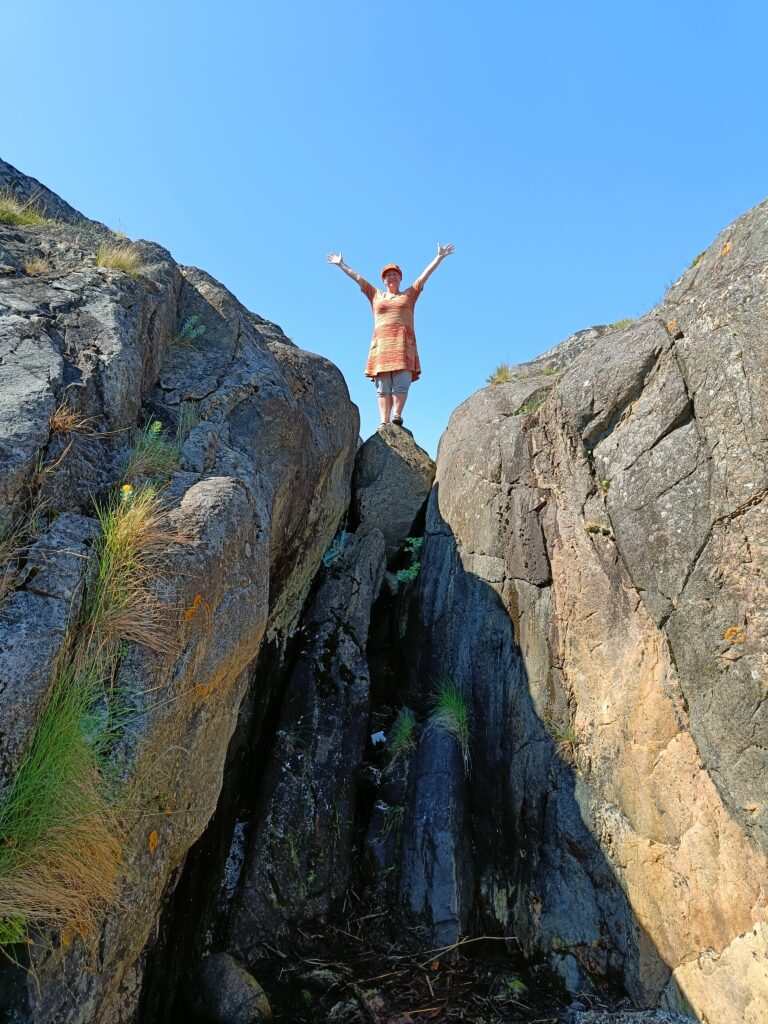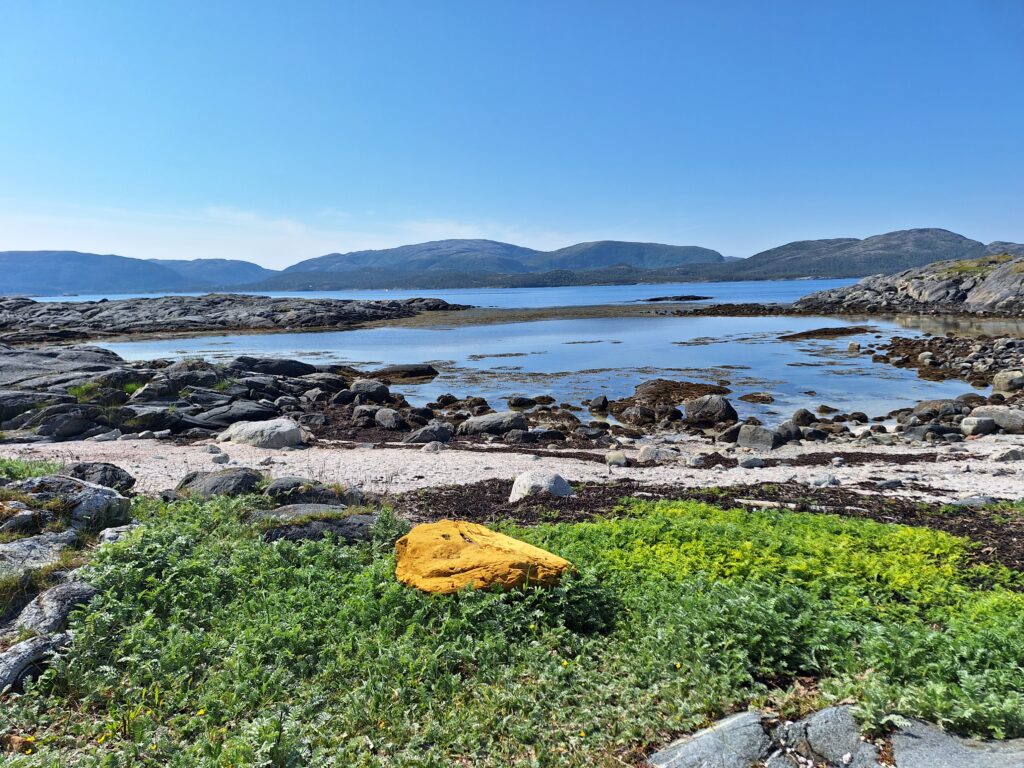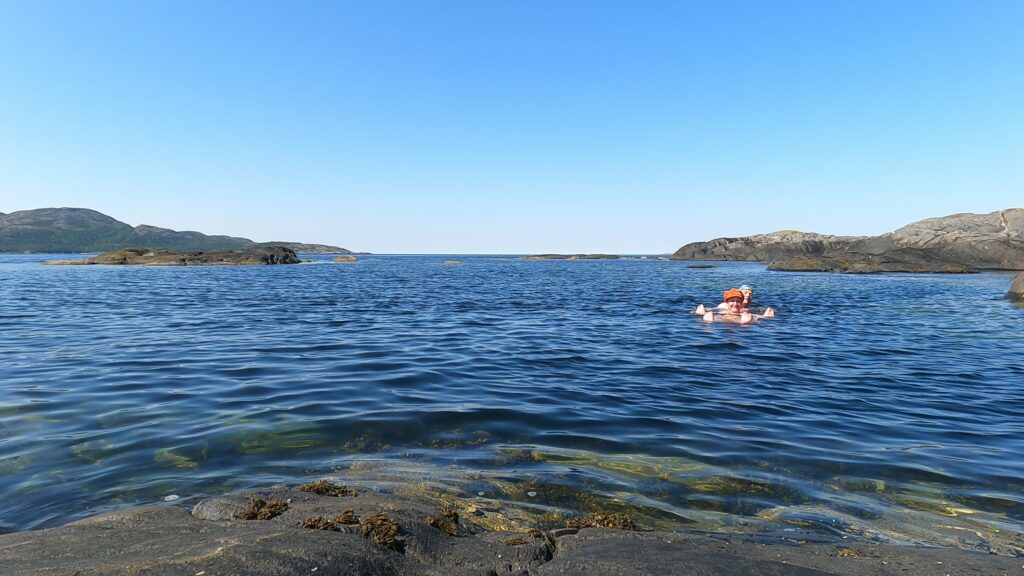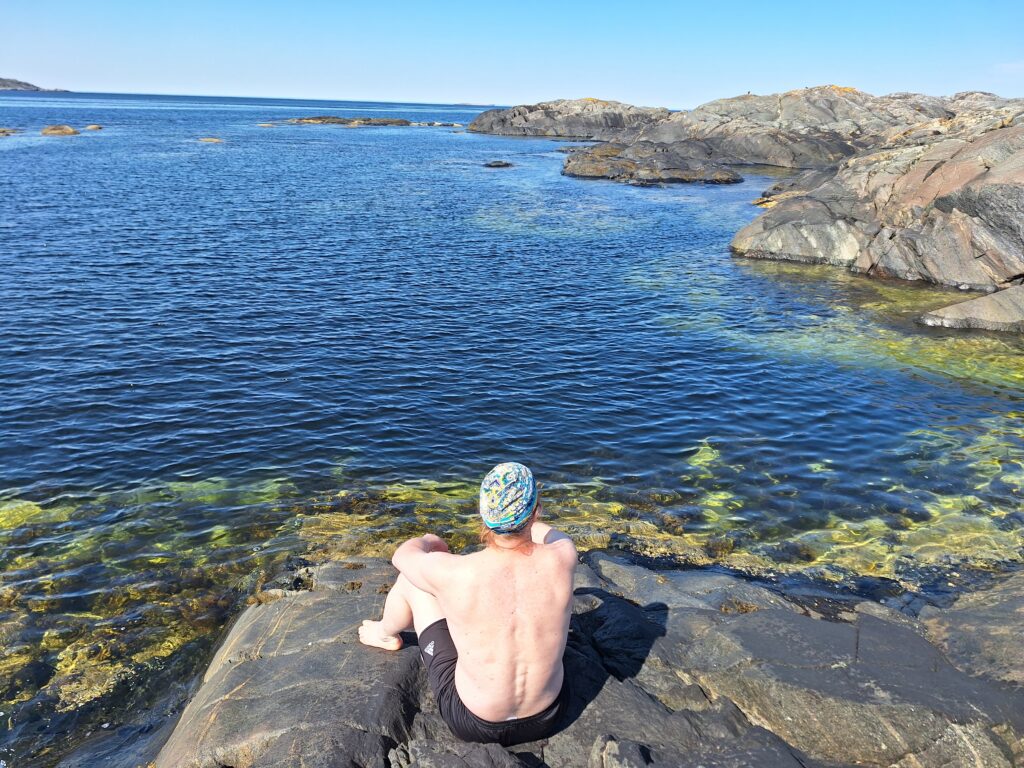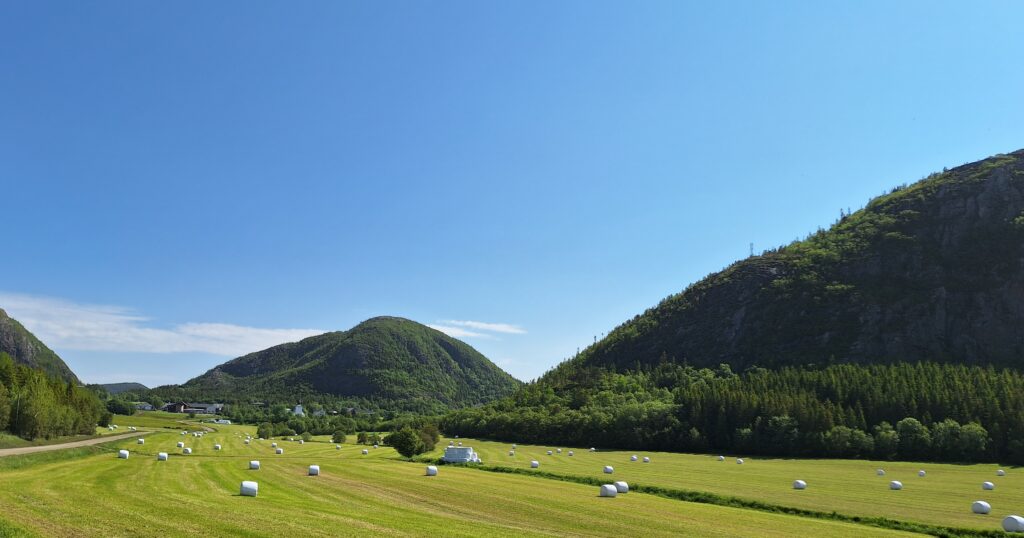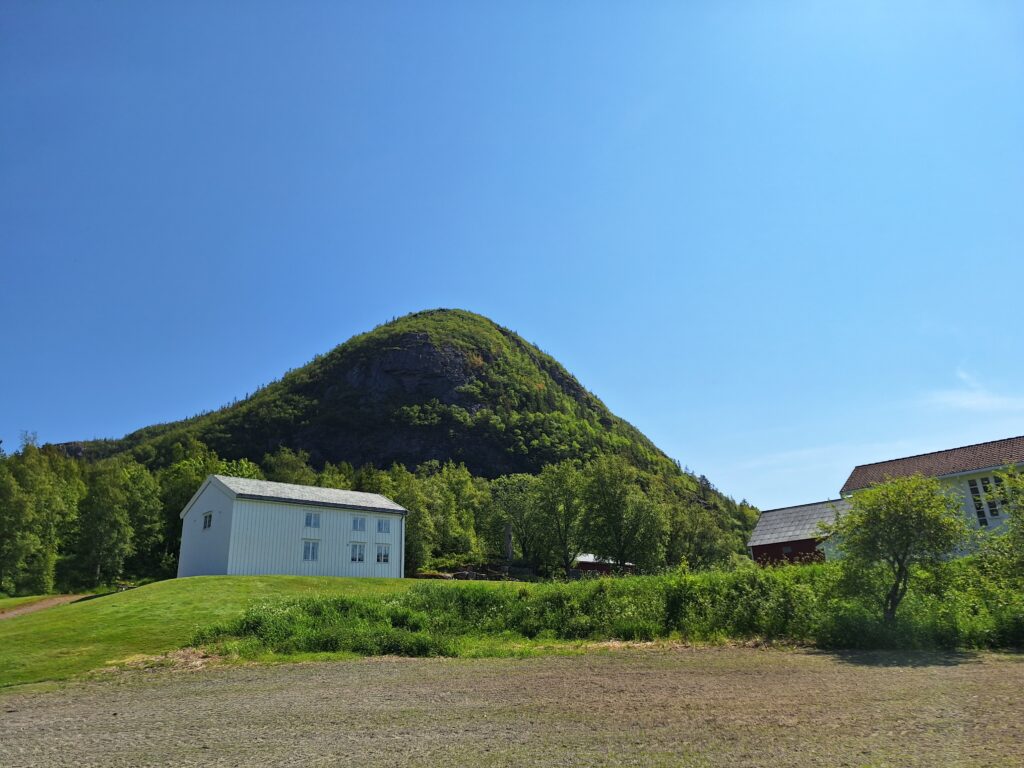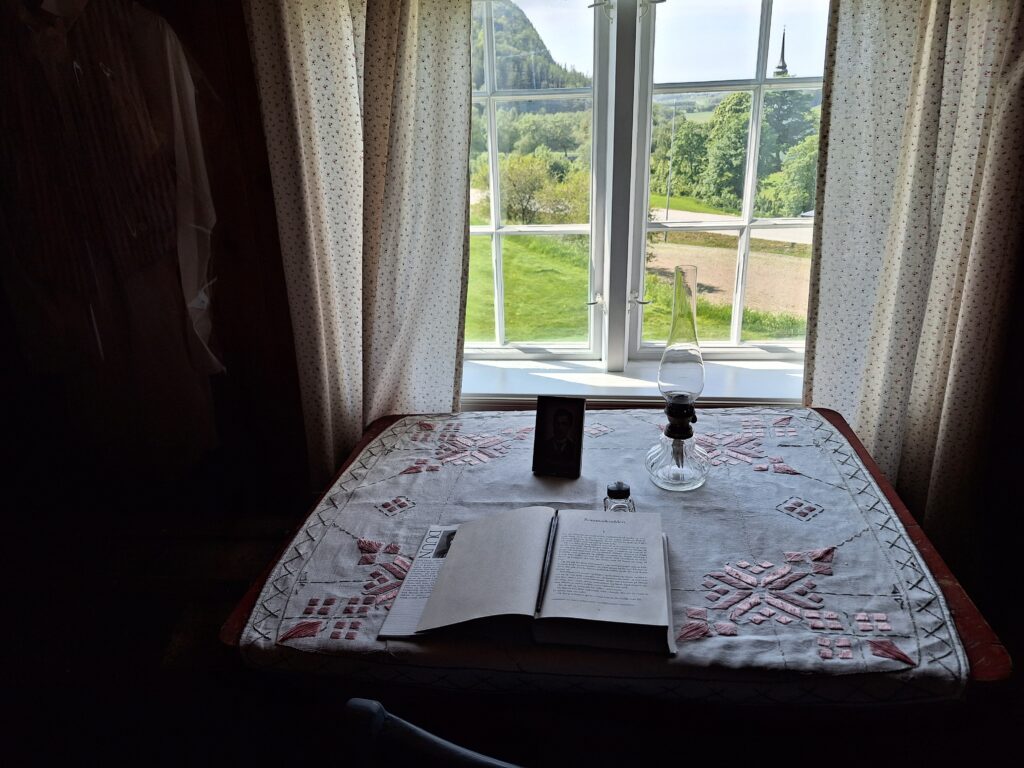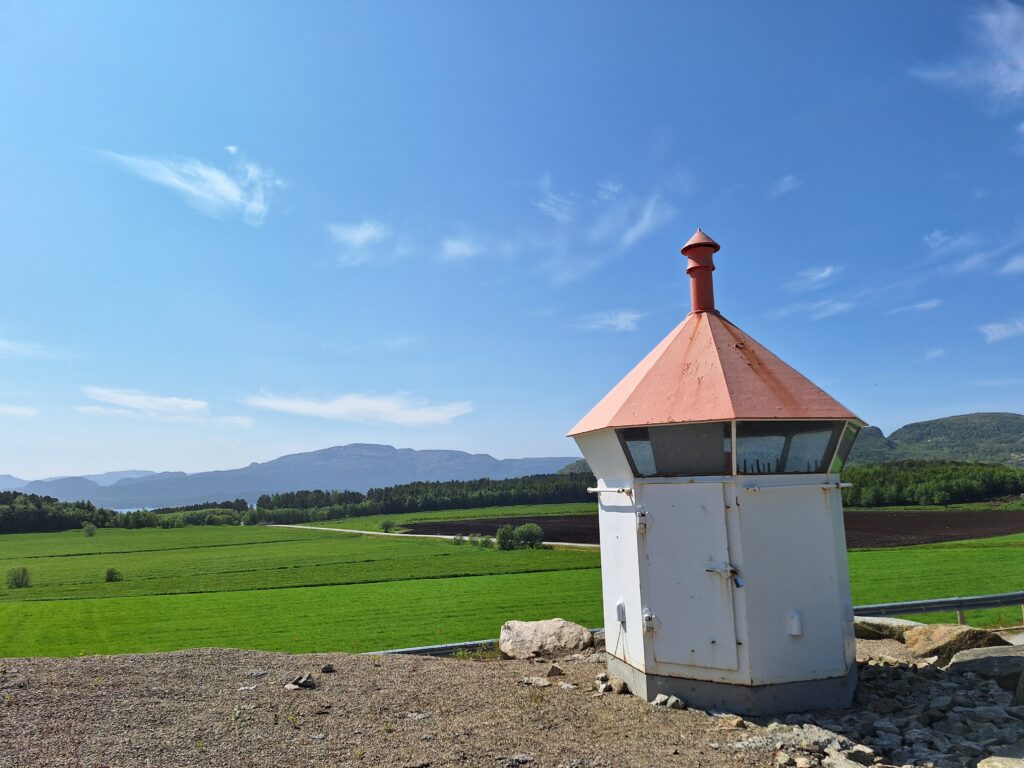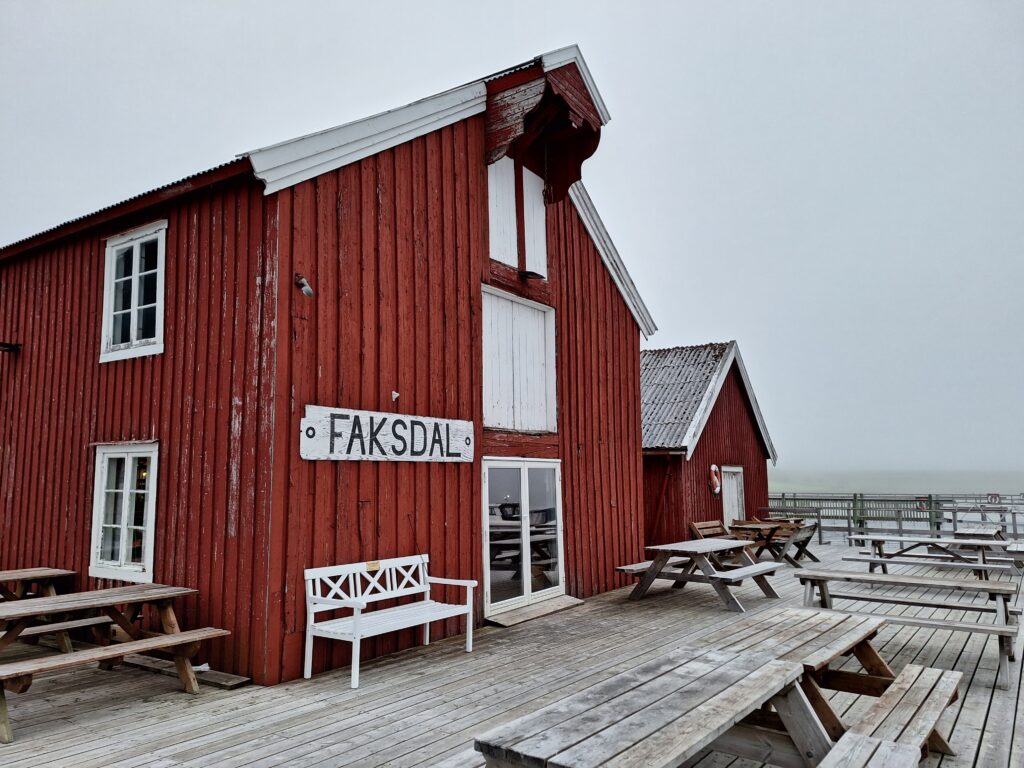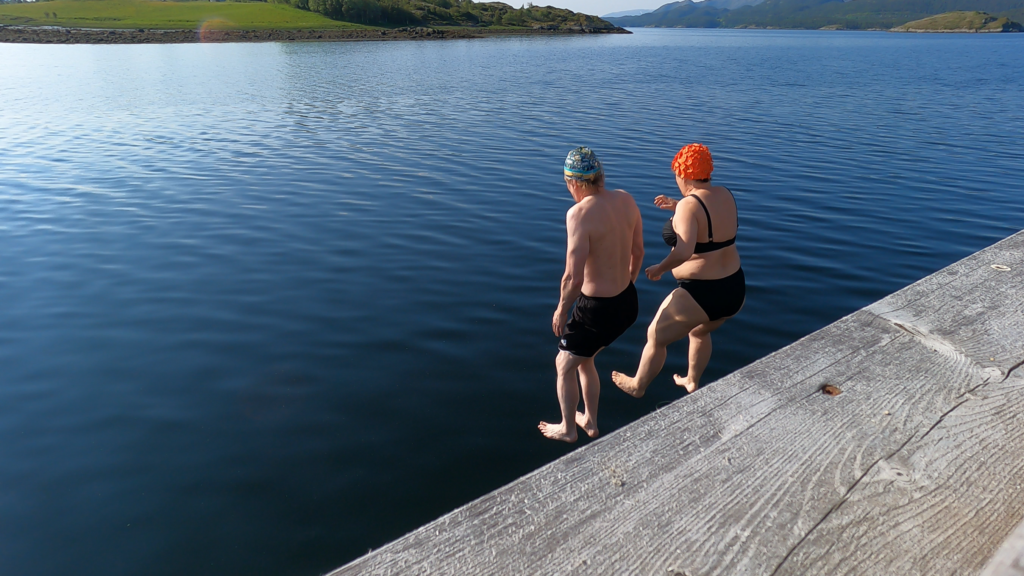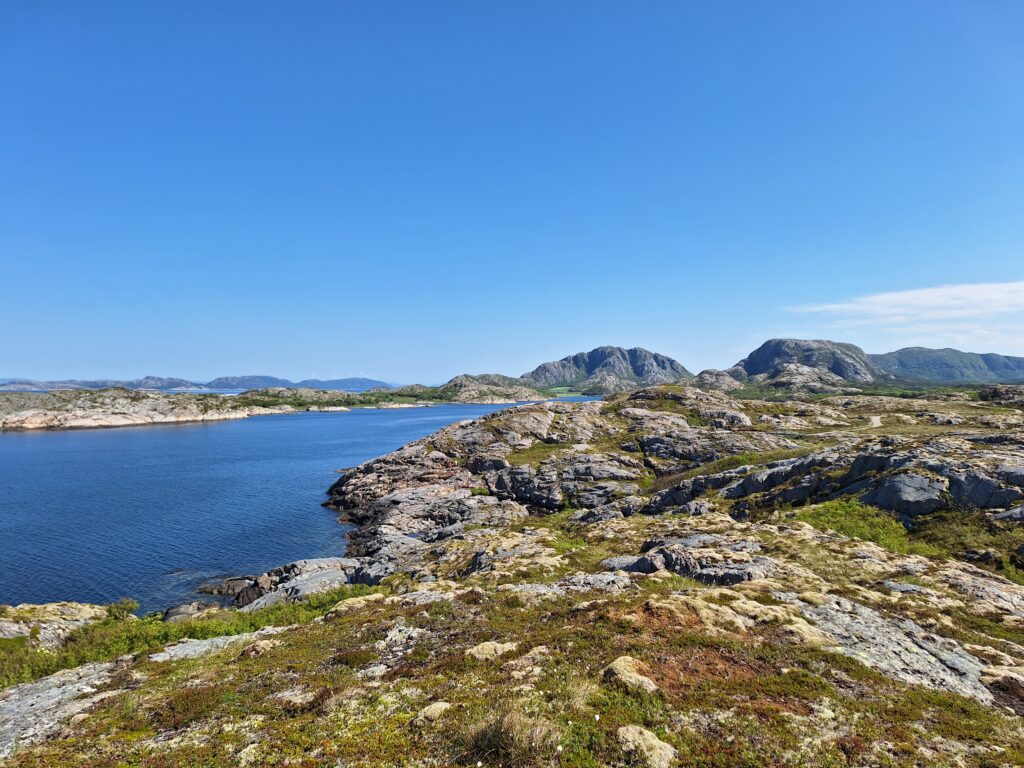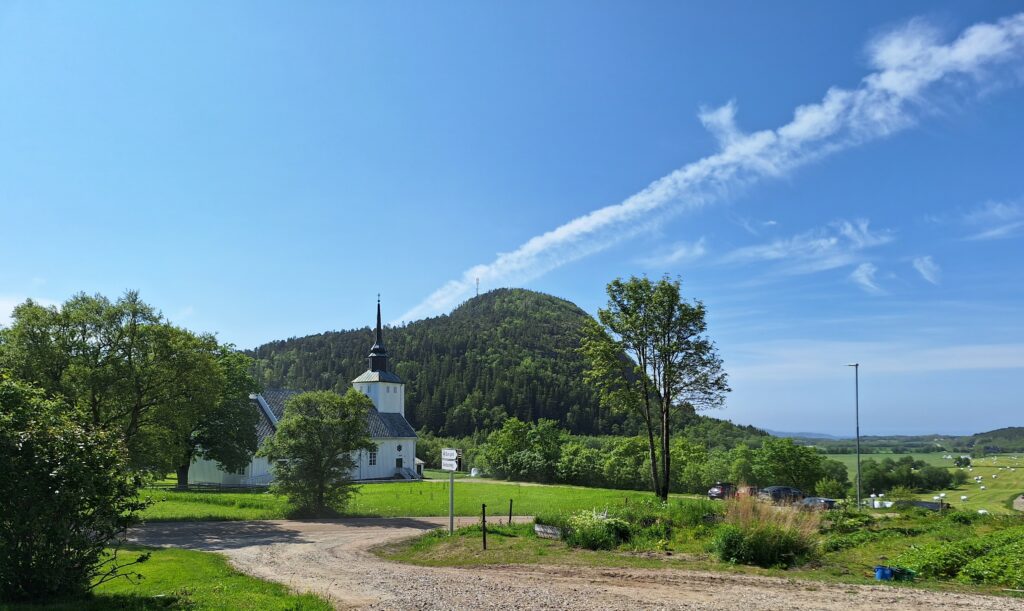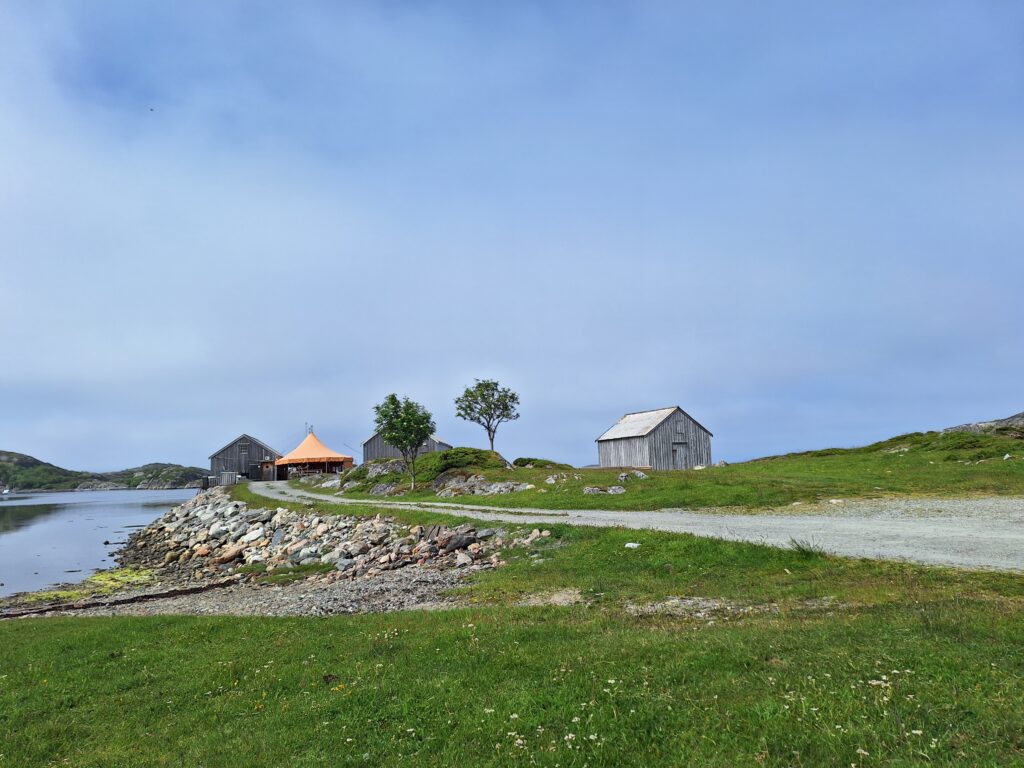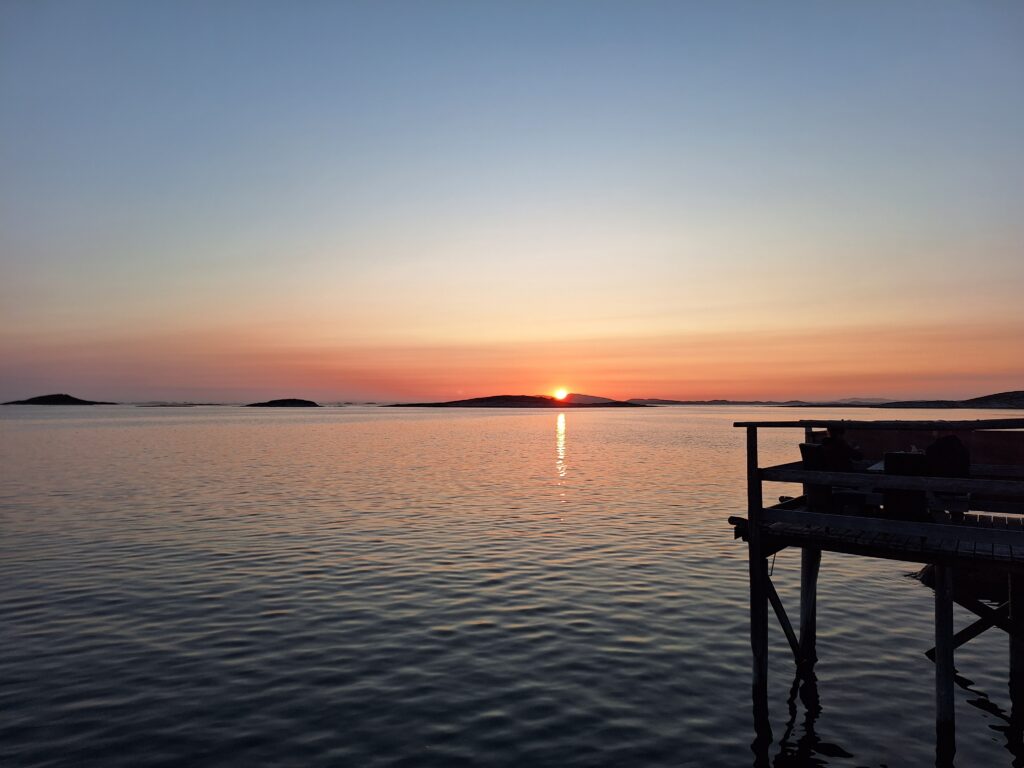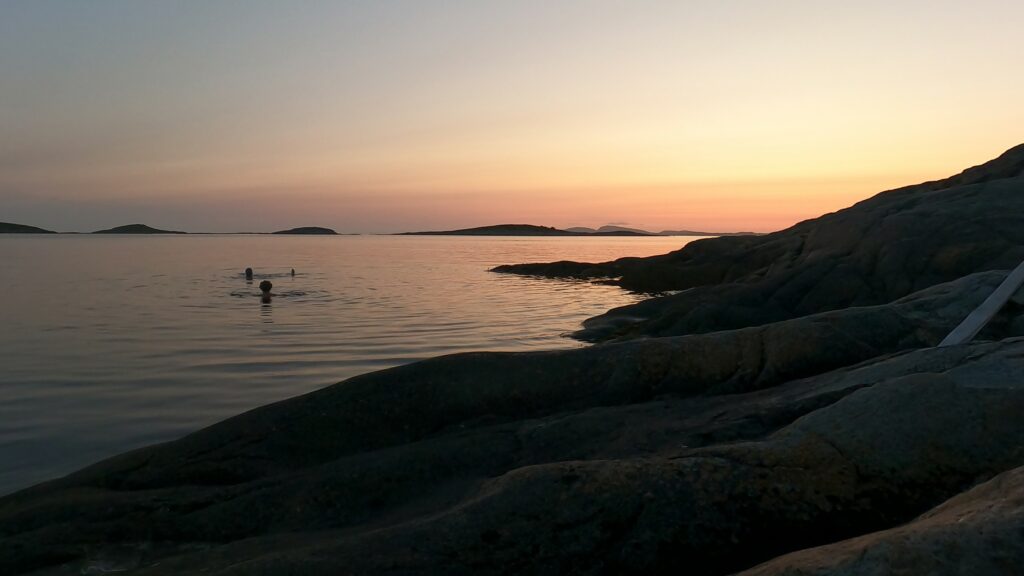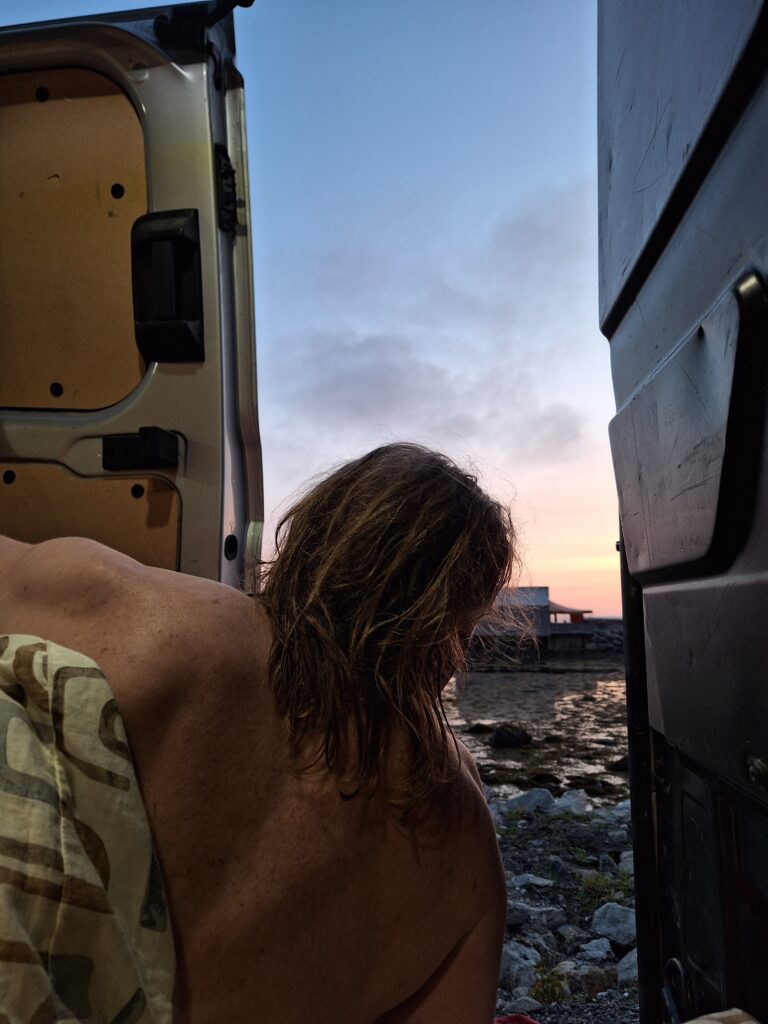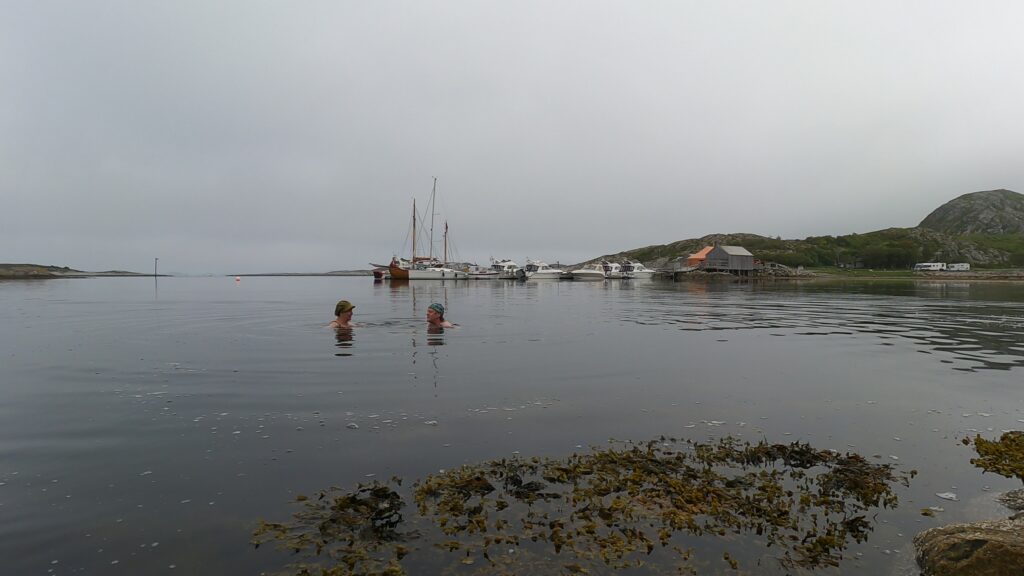On the island Jøa you can travel in time! And that is thanks to Jan Tranaas, who has built an Iron Age house in Storvika.
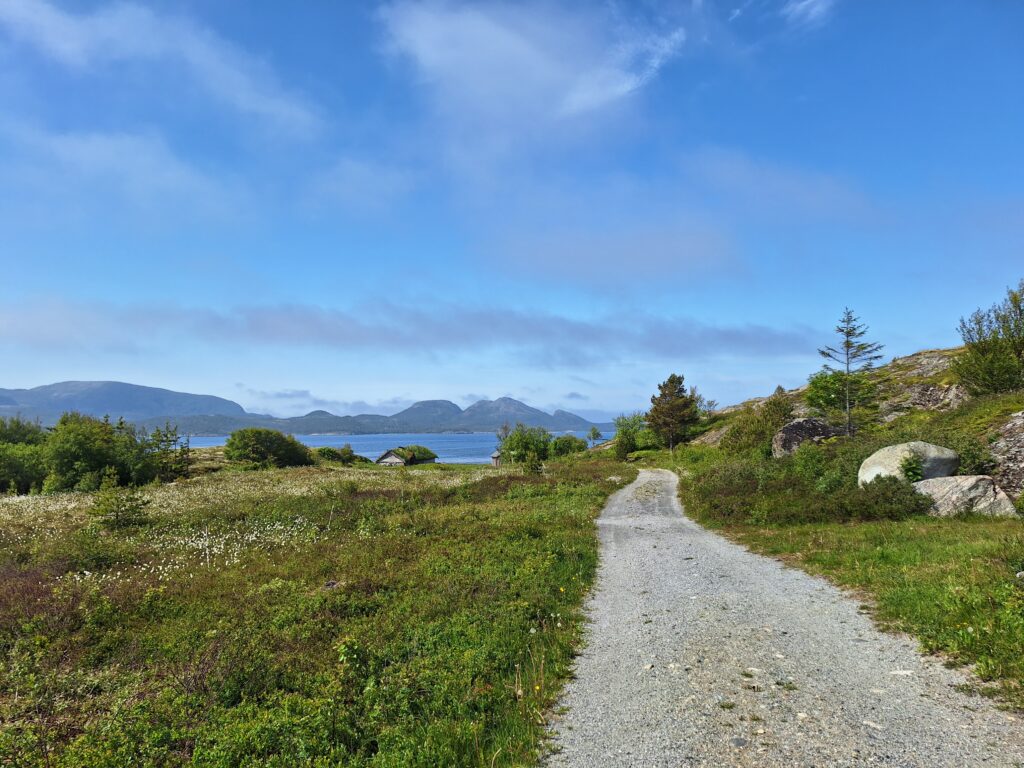
People have lived at Storvika/Tranås for at least 2,000 years. Here there are burials from the Iron Age, i.e. before the Viking Era. The finds contain traces of both the houses where people lived and the mounds where they were buried. Remains have been found for a ‘long house’ (more than 50 meters), a home for dozens of people, perhaps up to 50. Finds from Tranås include scissors, a sickle, a knife, parts of a sword and rivets made of iron, a spinning wheel and a baking plate of soapstone as well as a bronze pin. These finds are from around AD 400.
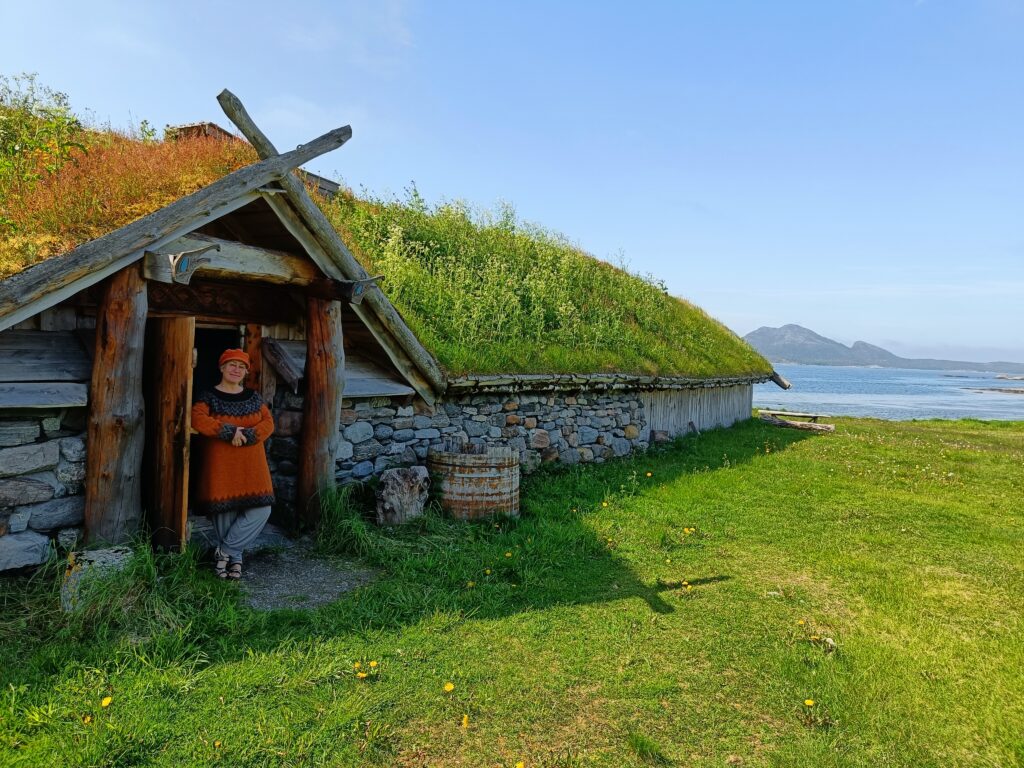
Building an Iron Age farm has cost Jan 20 years of thinking, 5 years of construction, 5,000 working hours and NOK 2 million. Well spent, both time and money, Tobatheornottobathe thinks, because the result is really fabulous. The new (from 2013) longhouse is 27 meters long and consists of stone, timber and turf. Naturally, we do not know in detail how the houses were built in the Iron Age – apart from the stone wall and the corner logs. Jan justifies his construction partly with findings from Sweden. The house in Storvika is heavy and solid and can withstand a storm or three. And that is needed, because the weather can be harsh at the coast of Trøndelag.
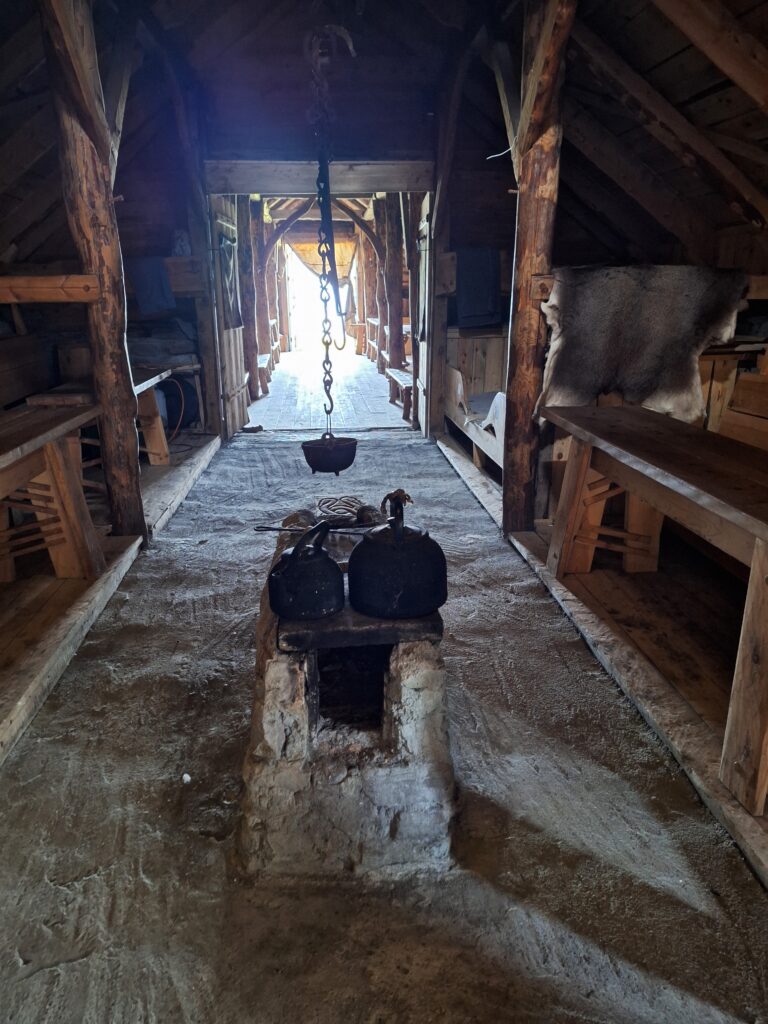
Jan’s dream has been to recreate the story of who the people in Namdalen originate from and how their ancestors lived. Today, there is scarce information about the way of life before the Viking Era. He thinks we need more knowledge about the time when the ‘Trønder‘ cleared the land, started cultivating the soil and for the first time built houses for people and cattle. People and animals lived together, the cattle provided warm houses during wintertime. Iron Age Jan has put coins under the logs, with the year when the house was built. So, if someone rediscovers the site in another 1,500 years, they don’t need the hassle of carbon dating to find the age of the house.
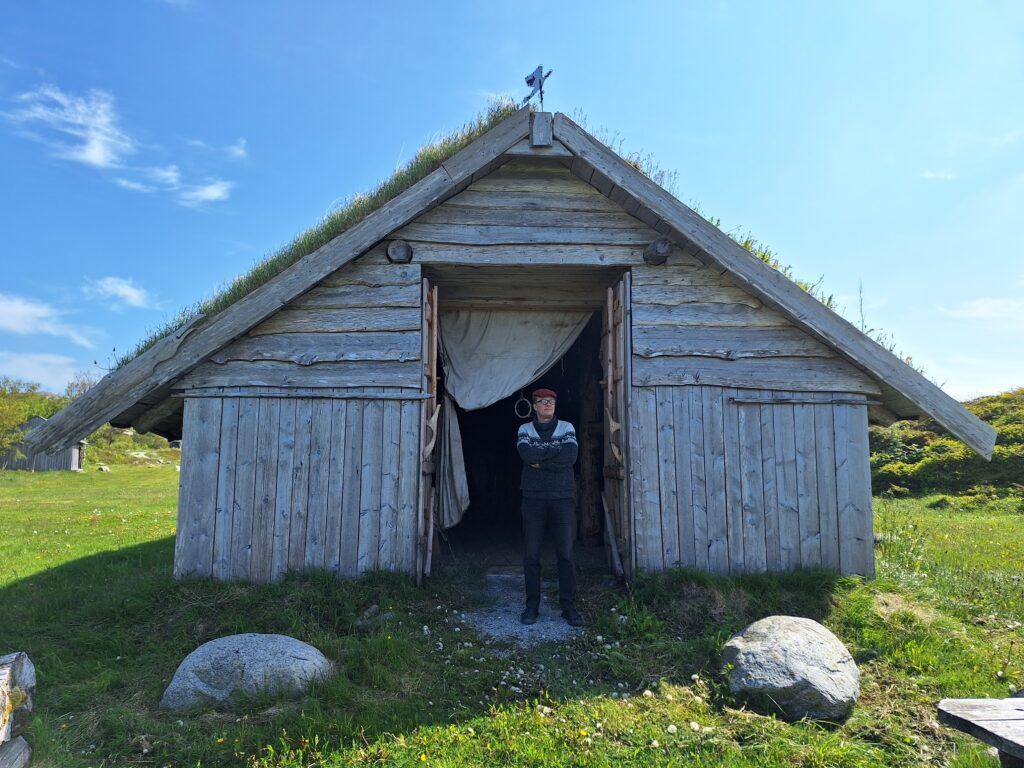
Storvika is an adventurous place, completely sheltered from modern times. We had a splendid bath in amazing surroundings, and a fantastic weather. The November bath will probably look a little different.
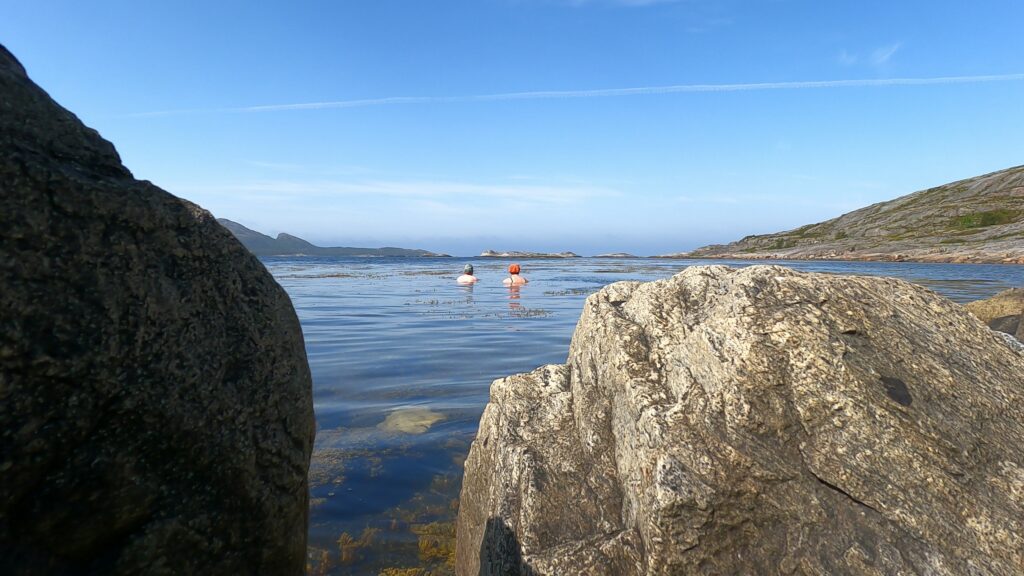
Our swimming gear was not quite ironage-ish. Next time perhaps a woolen bikini made by the single-needle knitting technique? Or just nothing at all.
References:
– Namdalsavisa 25/11-2013: ‘Jernalder-Jan hadde en drøm’.
– Information on site.
